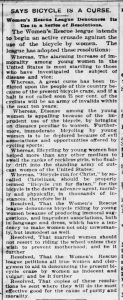In a very thoughtful and interesting post L’Hote writes about the Japanese response to their terrorist group/cult Aum Shinrikyo. The calm determination not to close down society and the results it caused to understand terrorism and threat assessment, look to Aum
Just as important was what the Japanese government and people did not do. They didn’t panic. They didn’t make sweeping changes to their way of life. They didn’t implement a vast system of domestic surveillance. They didn’t suspend basic civil rights. They didn’t begin to capture, torture, and kill without due process. They didn’t, in other words, allow themselves to be terrorized. Instead, they addressed the threat. They investigated and arrested the cult’s leadership. They tried them in civilian courts and earned convictions through due process. They buried their dead. They mourned. And they moved on. In every sense, it was a rational, adult, mature response to a terrible terrorist act, one that remained largely in keeping with liberal democratic ideals.
This reminded me very much of the Norwegian response to the Norwegian Breivik killed 76 people and bombed parliament buildings in central Oslo. He was politically motivated and left a, so called, manifesto “arguing” his misguided case.
The Prime Minister Jens Stoltenberg reacted immediately by calling for more democracy and more openness. It was a very moving and heartfelt response from a man who knew very many of the victims personally. He would go on to reinforce this position later (Huffington Post):
Five days after an attacker incensed by Norway’s culture of tolerance horrified the world, Prime Minister Jens Stoltenberg on Wednesday issued a quiet call of defiance to his countrymen: Make Norway even more open and accepting.
“The Norwegian response to violence is more democracy, more openness and greater political participation,” Stoltenberg insisted at a news conference.
Of course each situation is different but it is interesting to note that the “Keep Calm and Carry On” approach seems to be the quickest way of returning to a state of normality and healing that ensures that the attackers have failed in impacting the society they attack. L’Hote ends his post, which talks about the American response but applies equally to other countries, with the words
We have examples of adult responses to terrorism. Instead, we betray ourselves, in every sense a terrorized, terrified people.
Don’t see this as a spoiler – go read the text.




